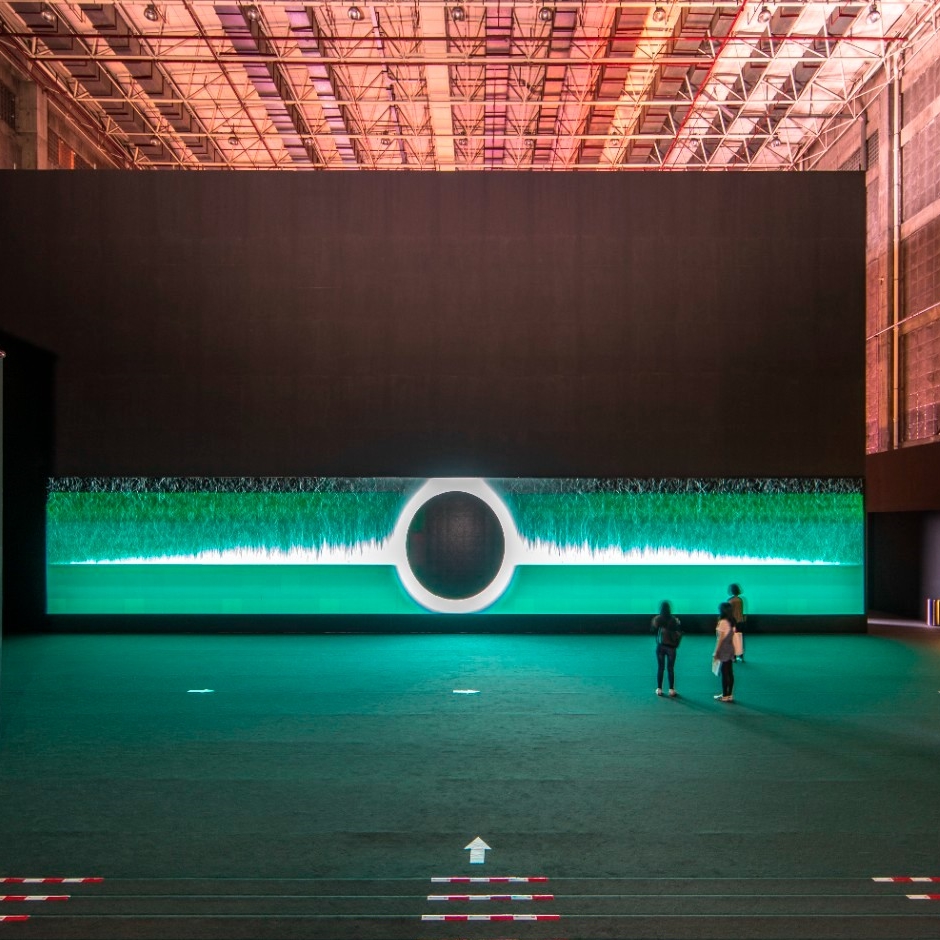Editor’s note: Richard Vine, the former managing editor of Art in America, visited Beijing in November 2023, following his first encounter with Chinese sculptor Liu Shiminng's work at Rutgers University. In this exploratory tour in Beijing, Mr. Vine was intensely involved with artworks, sketches, archives, and documentaries featuring various stages of Liu’s life and artistic career. In addition, he also communicated with some of Liu’s relatives, friends, and colleagues in person.
Liu Wei, son of Liu Shiming (right) explaining the work Boatmen on the Yellow River (1990) to Richard Vine (middle)
 Richard Vine communicating with Prof. Sun Wei from CAFA
Richard Vine communicating with Prof. Sun Wei from CAFA
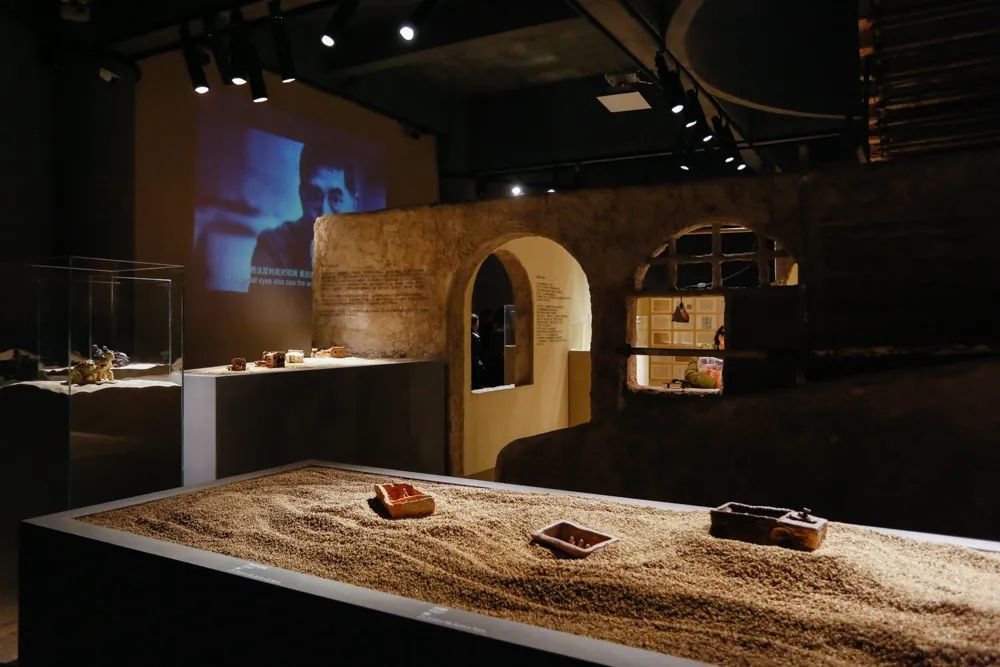
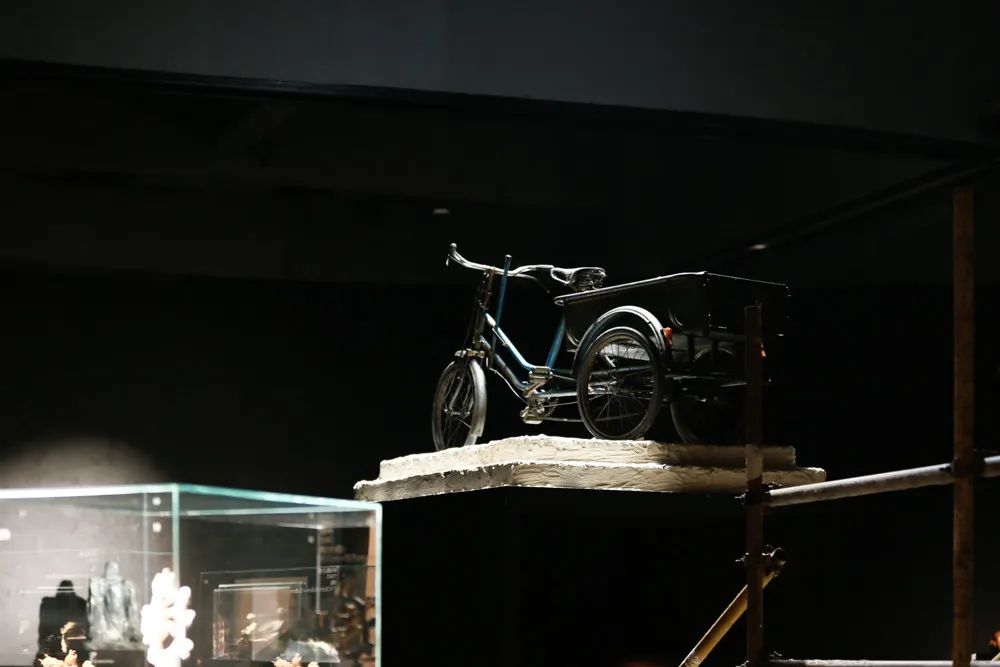
Installation view of Liu Shiming Sculpture Museum ©CAFA ART INFO
On November 13th, CAFA ART INFO invited Mr. Vine for an interview. Discussing his ongoing critical biography of Liu Shiming, Vine shared his initial thoughts regarding Liu’s art at the very beginning of this interview. We realized that Vine was exposed to the rich resources of Liu Shiming during his visit to Beijing this time, including Liu's diaries, sketches, and small-scale clay sculptures, which are difficult to transport internationally due to their fragility. Vine blended his background in literature and his interests in country-and-western music with these resources in the interchange, extensively examining the external and internal forces that motivated Liu to make his life choices. Furthermore, he analyzed Liu’s art from the early days when the artist received his academic training through the latter periods in which he depicted daily life, folk culture, and other motifs.
Vine analyzed Liu's art from a fresh perspective by relating its concerns and empathy with ordinary people to Western literature and art movements. He also gave insights into the recent international cross-cultural exhibitions and academic events organized by the Liu Shiming Art Foundation. Vine inspires us to juxtapose Liu’s art with the recent critical issues in the West, such as folk art, Outsider Art, and identity aesthetics. By doing so, both the “Chinese-ness” and the universality of Liu’s work can be translated appropriately to a global context.
I. A Critical Biography
CAFA ART INFO: How did you start learning about Liu Shiming? What was the first occasion for you to explore Liu Shiming and his art? What were your initial thoughts upon seeing his work?
Richard Vine: I was introduced to several Foundation members through a mutual friend. He Miao, an artist here in China recommended that we should meet. People in the Foundation kindly invited me to the Liu Shiming exhibition at Rutgers University in September. That was my first exposure to the work itself. Later on, we met at the Foundation office in New York.
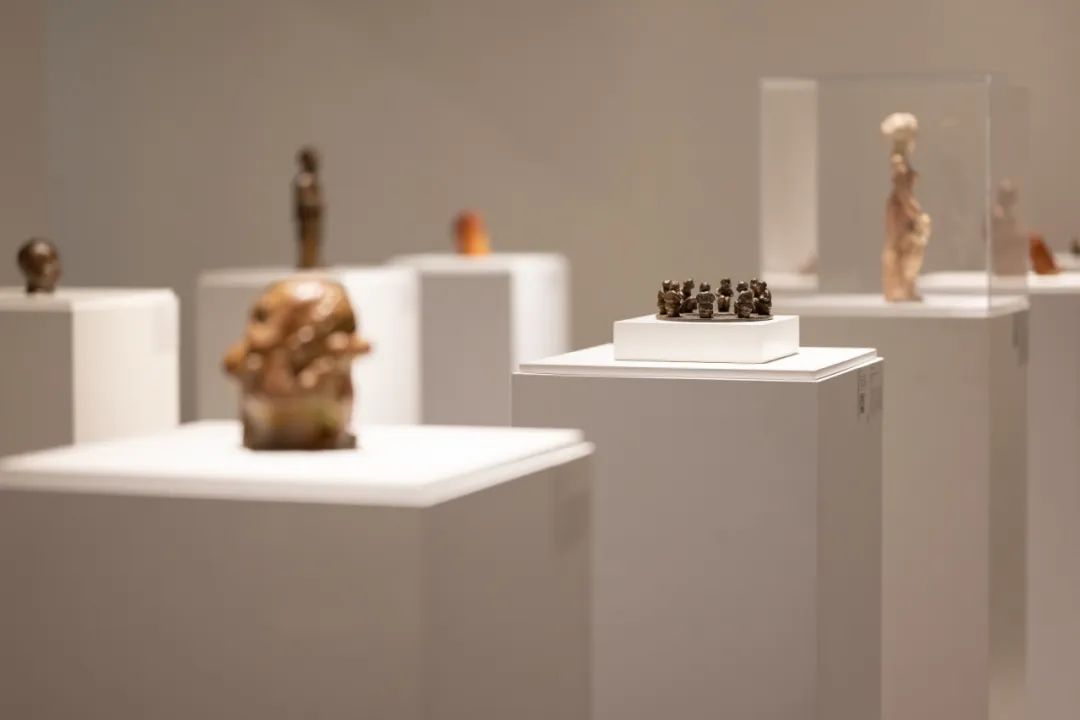
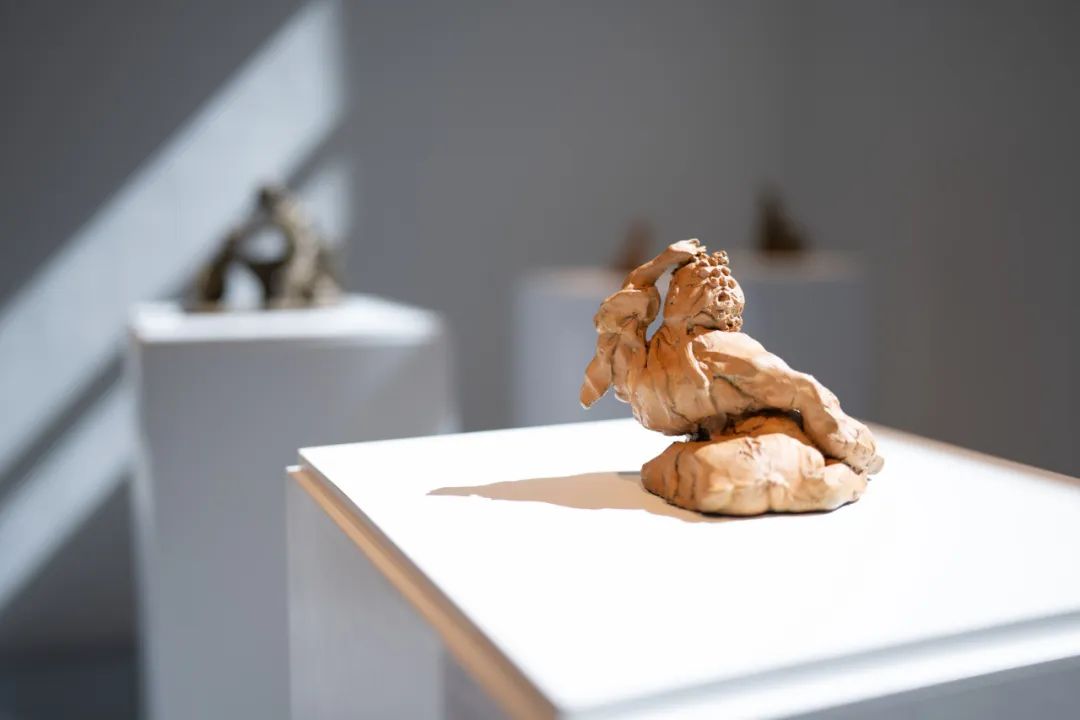
Exhibition View of “LIU SHIMING: Life Gives Beauty Form”, Rutgers University, 2023
 Richard Vine (right) and Kate Murphy (left), recipient of the Liu Shiming Scholarship in Western University, Canada
Richard Vine (right) and Kate Murphy (left), recipient of the Liu Shiming Scholarship in Western University, Canada
CAFA ART INFO: I learned that you are going to write a book about Liu Shiming. What attracted you to start and proceed with your writing?
Richard Vine: Like many other people, I was initially struck by the simplicity and the genuineness of the work. I have a so-called “fancy life” in the art world, traveling around to various countries, giving talks, attending opening and dinners, etc. But originally, I came from a typical working-class family. My father had to leave school at the age of 14 to work. My grandfather was a coal miner who went to “the pits” when he was 12 years old. There was a real personal connection for me to the life that Liu Shiming portrayed. Also, I have an unusual taste in music. I like American country-and-western music, which few people in the art world can tolerate. Country music is very simple. There is a joke in the business that a country song is three chords and the truth. That is the quality that I responded to Liu Shiming’s works.
CAFA ART INFO: Can you share more about the book? Will it be a critical book or other types of book?
Richard Vine: This book is going to be a critical biography. Liu Shiming’s life was very fascinating, and intimately related to his work. You really cannot separate the two. The approach will be chronological. At the end of the book, I will have some sections positioning Liu’s work critically and art historically, making some parallels between Eastern and Western art history.
CAFA ART INFO: What specific perspective are you going to use to step into Liu’s life and art?
Richard Vine: Naturally, I am fascinated by several unusual decisions that Liu Shiming made. For example, in 1961, he gave up a very comfortable position in Beijing and went off to the countryside. Then there was the decision to suppress his formal training—not to forget it, but to keep it in the background while seeking his own simplicity of form. None of his decisions were made to gain advantage or privilege in life, but rather to dedicate himself completely to his work. He was very determined. On the outside, he was gentle and kind; on the inside, he obviously had a very strong will to make his works in his own way.
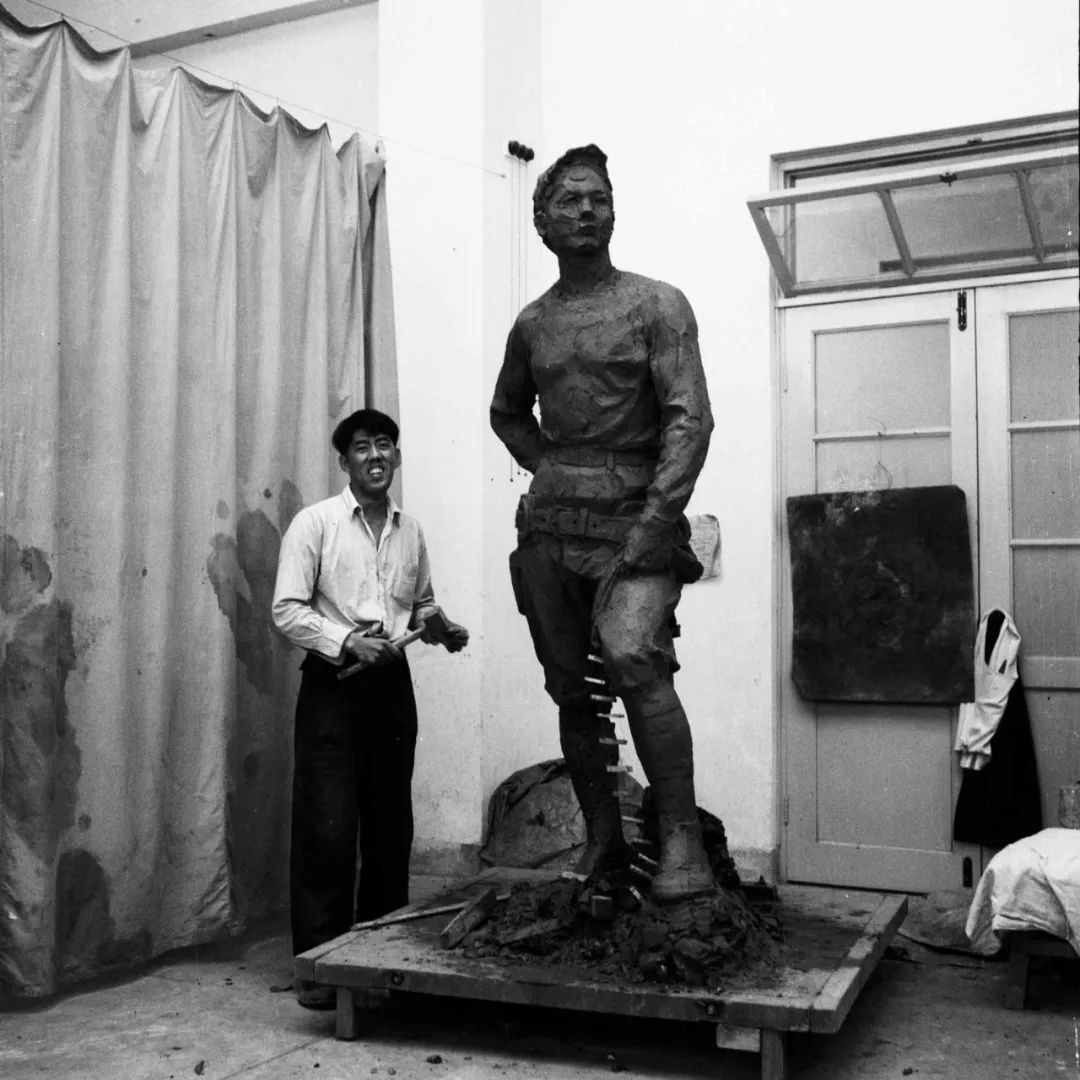 Liu Shiming in his youth
Liu Shiming in his youth
 Liu Shiming at the sculpture studio of the Monument to the People's Heroes, 1950s
Liu Shiming at the sculpture studio of the Monument to the People's Heroes, 1950s
CAFA ART INFO: You just mentioned Liu's choices throughout his life. When making decisions, the artist was profoundly influenced, on the one hand, by Chinese traditional art. On the other hand, artists such as Liu must be influenced by the specific political and social environment of their time. What are your thoughts on this?
Richard Vine: I think we can only infer, since I have not yet come across an explicit explanation in the diaries or letters. However, if you look at the patterns of these decisions, it seems that he is very much wanted to be a self-directed artist. He could have had a fine career—and a very comfortable life—simply doing commissioned projects. But something moved him to say no. Again, I can only guess. At the time, there was a lot of propaganda work celebrating the nobility of workers, soldiers, and peasants. At first, Liu helped to produce such projects. But I suspect he came to feel that such work was not truly genuine. I think he took to heart the inner message of the era’s ideology—the vital importance of common people—rather than its outer visual rhetoric.
II. Exploring Trip in Beijing
CAFA ART INFO: Regarding your visit in Beijing this time, I'm sure you came across a wider range of Liu's work and archival materials. Could you please share your insights from this exploration trip with us? Is there any fresh inspiration?
Richard Vine: The other day, we looked at many of Liu’s writings, drawings, and sketches, which are extremely interesting—very energetic and charming. In the traveling exhibitions, the works mostly reflect everyday life. But when you see the full body of Liu’s work, you realize that he also explored history, mythology, opera, and so on. But the consistent factor in all of this is his ability and determination to step outside himself. It is a kind of paradox in his nature that, on the one hand, he is really determined, really self-directed. On the other hand, his purpose is to explore the life of other people.
As a Westerner, this reminds me of the split in the Romantic Movement during the late 18th and 19th centuries. The Romantic Movement has two streams. All Romanticism has to do with the self. However, one of the branches is about self-glorification: the artist as genius. Percy Shelley once said that “poets are the unacknowledged legislators of the world.” They presume to set the moral agenda for all humankind. In his most famous poem, Song of Myself, Walt Whitman asserted, “I contain multitudes.” But there is another stream of Romanticism that flows from John Keats, who focused on what he called “negative capability.” This was essentially empathy, the ability to imaginatively put one’s self into another position or situation—even another being. One accepts uncertainties, without passing judgment. This is the capacity that great playwrights and novelists have, which enables them to portray many kinds of people, to get inside those people and understand them. Take Shakespeare. You can read a thousand of pages of Shakespeare's plays, finding many complex and colorful characters. But at the end of the thousands of pages, you may ask yourself: what did Shakespeare himself really believe? It is impossible to say, because he perfectly transposed himself into another world and all its inhabitants. Delve into Liu Shiming’s work and that, too, is what you find.
 Sheepskin Raft: Investigation 2, 27.2×15.7×13.5cm, Pottery, 1983
Sheepskin Raft: Investigation 2, 27.2×15.7×13.5cm, Pottery, 1983
 Cave Dwelling at Shan County, 25.5×15.3×8.9cm, Pottery, 1983
Cave Dwelling at Shan County, 25.5×15.3×8.9cm, Pottery, 1983
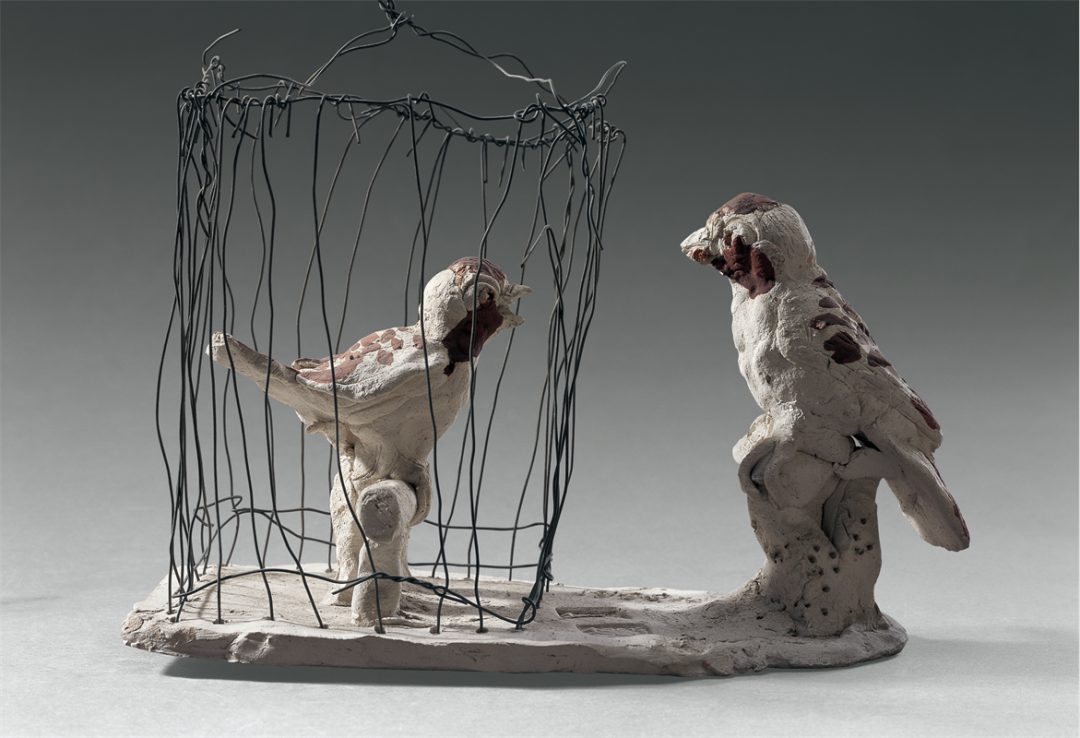 Looking at Each Other Through a Cage, 19.3×9.7×16.6cm, Painted Pottery, 1990
Looking at Each Other Through a Cage, 19.3×9.7×16.6cm, Painted Pottery, 1990
CAFA ART INFO: Did you see any more small-scale sculptures made of clay or pottery? I imagine that many of Liu's sculptures constructed of clay and pottery are seldom available outside of China due to the fragility of the materials. Some significant items were casted in bronze for worldwide display. I personally found these small-scale clay sculptures interest me the most. I'm curious what you think about Liu's clay sculptures.
Richard Vine: In the clay works, there is a parallel between the material and the subject: the subject comes from everyday life, and the material is everyday clay. Some of Liu’s clay works are glazed, but most of them remain raw. In the West, for many centuries, we had the notion that only certain topics are suitable for the art, and they should be treated in the particular way with particular materials, especially “noble” materials like bronze, marble, silver, and gold. However, at the beginning of Modernism, that notion was overthrown. One of the striking examples is Duchamp’s Fountain. He just placed a urinal on its side and signed it with a pseudonym, which is a way of saying that anything can be art. That is one big step toward integrating life and art, which is a very important goal for many modern artists in the West. I believe this is close to the ethos of Liu Shiming’s clay works.
 Boatmen on the Yellow River 1, 34.7×13.7×9.9cm, Pottery, 1983
Boatmen on the Yellow River 1, 34.7×13.7×9.9cm, Pottery, 1983
 Lovers, 17×10.3×8.8cm, Pottery, 1983
Lovers, 17×10.3×8.8cm, Pottery, 1983

Mother Returns, 10.8×9.4×27.9cm, Pottery, 1987
III. Tracing Liu Shiming’s Art
CAFA ART INFO: Liu Shiming’s early works clearly show that he was greatly influenced by the French classical style and academic training in China. However, he did not follow this tendency. What external and internal causes, in your opinion, drove him to modify his artistic style?
Richard Vine: It happens to many artists, particularly at the beginning of Western modernism. Artists were classically trained, accustomed to working from live models. The conventions of pose and treatment and materials had been repeated and repeated. In order to break away, people had to make art cruder, in a way, and yet more conceptually daring. Picasso did it, Matisse did it.
Again, there is a parallel in country-and-western music. In the old days, the classic background for a country singer was to grow up in the mountains with twelve brothers and sisters, to wear a potato sack to school, and so on. Then, one day, along comes Kris Kristofferson, whose father was a military officer—eventually a general. Kris was a literature major who won a Rhodes Scholarship to study at Oxford. Yet when he came back, instead of teaching literature at West Point as he was supposed to do, he quit the army and went off to become a country-and-western songwriter and performer. When highly trained people make a choice like that, it’s probably because they feel that simpler ways are more authentic. The whole point of poetry, after all, is to say the most in the fewest words. Liu Shiming, who was academy trained, made a choice to leave Beijing for the provinces, and ended up using the simplest materials to create an art of profound feeling.
 The Group Photo of Liu Shiming (the second one from the right in the second row) and His Classmates When He Graduated from CAFA in June, 1950
The Group Photo of Liu Shiming (the second one from the right in the second row) and His Classmates When He Graduated from CAFA in June, 1950
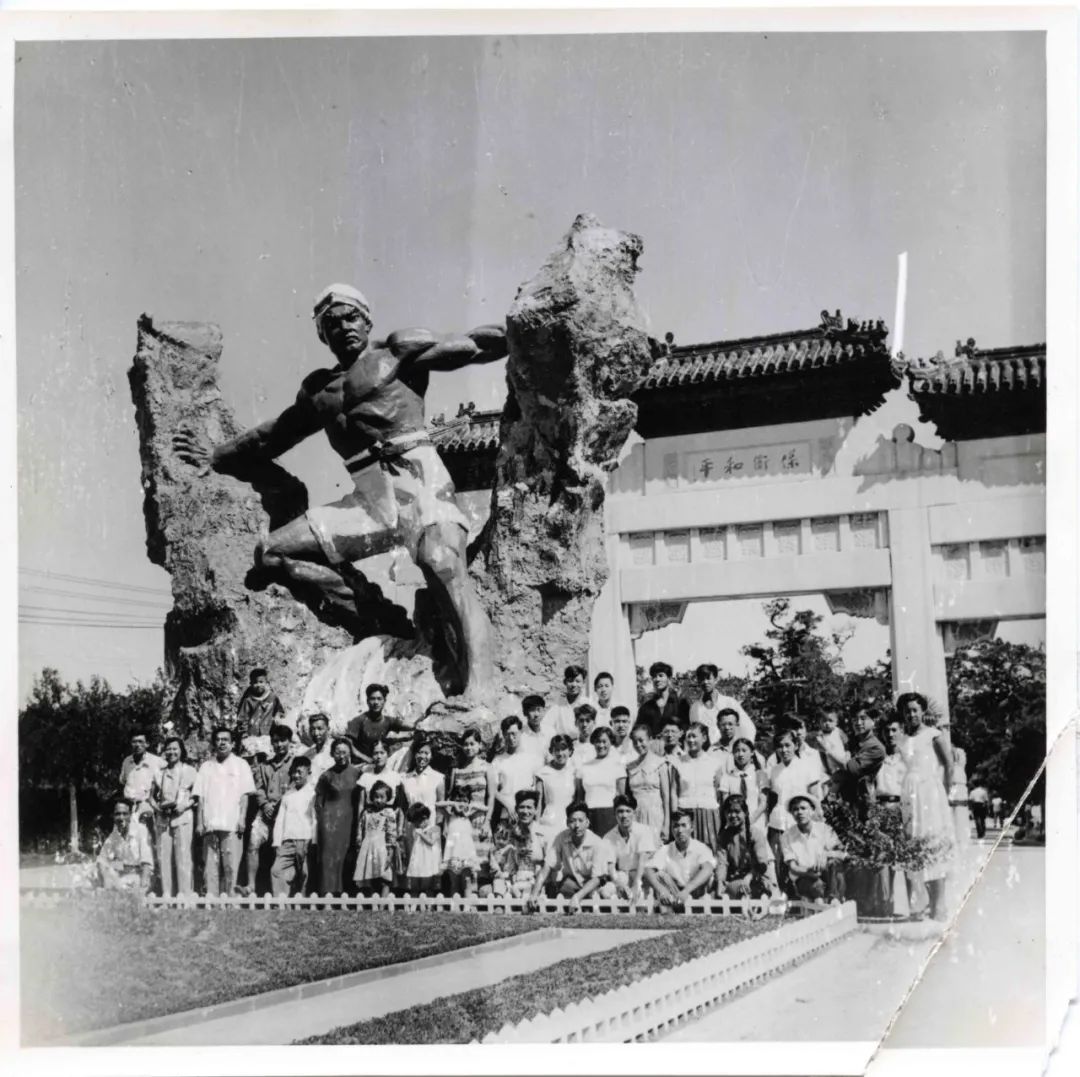 The Group Photo Taken in 1958 When Liu Shiming’s “Splitting the Mountains to Let the Water Flow” (also known as “Moving Mountains and Making Sea”) was established in front of the Peace-Guarding Square at Zhongshan Park in Beijing.
The Group Photo Taken in 1958 When Liu Shiming’s “Splitting the Mountains to Let the Water Flow” (also known as “Moving Mountains and Making Sea”) was established in front of the Peace-Guarding Square at Zhongshan Park in Beijing.
CAFA ART INFO: Besides gaining life experience in rural China in Henan and Hebei, Liu worked at the National Museum of China, where he absorbed traditional sculptural techniques from repairing and replicating artifacts, such as figures from the Han dynasty and folk crafts, and therefore developed his own sculptural language. How do you understand these two stages in terms of shaping and developing Liu’s own artistic language?
Richard Vine: It is pretty obvious that when Liu went to the provinces, he found his true subject matter. I haven’t seen much of his work from that period. The examples we have date mostly from the mid-1970s, when he returned to Beijing, to his death in 2010. During his time at the museum, he was able to handle and examine ancient earthenware figures from the Han dynasty, figures that represent carrying the happiness life into the afterworld. Recognizing the enchanting quality of figures on a smaller scale may have given him the form that he needed. Most sculpture, by its very nature, tends to be large. It is mainly for public display, often outdoors, using durable materials like stone, bronze, or steel. Finding a modest scale and simple materials to express the simple life is key to Liu Shiming’s work.
CAFA ART INFO: Some people regard Liu's work as folk art. There may be an underlying feeling that his work is not "high art," due to its intimate relationship with ordinary people's everyday lives as well as its unglazed surfaces and rough texture, particularly in his late stage. How will you respond to this discussion?
Richard Vine: It’s ironic that, in Western art circles today, folk art has become a huge market. Now we have folk art museums, folk art education, and folk art fairs. We even have academy-trained young artists making what looks like folk art in a not-so-authentic way. When you encounter folk-style work by privileged art students, you’re always faced with the question of how to distinguish genuine feeling from a coolly calculated imitation of feeling. I think you have to look at the whole life of an artist. When you survey the entire life, and the entire oeuvre, of Liu Shiming, there is no doubt that he was sincere, and that he found his own genuine mode of expression.
 In 1970s, Liu Shiming worked at the National Museum of Chinese History
In 1970s, Liu Shiming worked at the National Museum of Chinese History
IV. Understanding Liu Shiming in the Contemporary International Context
CAFA ART INFO: Liu Shiming's art has a distinctive style, with a rarely smooth and delicate surface. I believe his art is different from that of any other Chinese or Western artists you've encountered. How would you describe Liu Shiming's sculptural style? I feel it is difficult to identify/label him as a specific sort of artist. He is unique both in Chinese history and in Western history.
Richard Vine: I do not know if there is a particular category that he can fit. In Western art history, there are many moments that may help explain Liu Shiming in some way. You can go all the way back to the Egyptian tomb figures. People are familiar with the monumental statues of Pharaohs and their wives. However, in Egyptians tombs, there were also clay figures about everyday life, describing everything that can be carried on in the afterlife. The figures that Liu Shiming creates are also quite similar to some Gothic sculptures as well. One thinks of great cathedrals, huge stained glass windows, and the life-size statues of saints. But look closely and you will find everyday scenes portrayed in the corners, at the margins—scenes that contrast with, and provide a context for, the glory of the God. In the 19th century, there was a French art movement called the Barbizon School. Artists left the city and went out to the countryside to depict woods, fields, livestock, and farm workers. Also during the 19th century, social commentary artists chose themes that set in cities but portraying everyday folks, often in misery. Russia had a group called “The Wanderers” (Peredvizhnik). They traveled around capturing scenes of the common life as well. In the United States, we had the movement called “Social Realism,” which attempted to convey the realities of the Great Depression. There are lots of parallels and echoes between Liu Shiming’s works and these precedents. I wish I knew more about Chinese art history, to see if there are parallels there as well.
CAFA ART INFO: The Liu Shiming Art Foundation has introduced and promoted Liu's art globally in recent years through cross-cultural art exhibitions and a scholarship program. I'm curious how Western scholars, artists, and audiences see Liu's work. Is there a shared set of interests or points of view when it comes to understanding Liu's work?
Richard Vine: In the West, we have the phenomenon called Outsider Art. In the late 19th century, a German psychiatrist named Hans Prinzhorn was working in a mental hospital. He began to pay attention to the drawings of his patients and eventually wrote a landmark book on the topic. This inspired other artists and thinkers such as Jean Dubuffet to look at the art of people who are not trained in an art school and may be ill-adjusted to society. Previously, those works were just ignored. But people like Prinzhorn, Dubuffet, and the Surrealists began to realize the great value and great power of these untrained artists. Now it has become a major field of study. There is an Outsider Art Fair today that is exclusively for those untrained artists.
Obviously, Liu Shiming was not untrained, but he chose to adopt a style that is similar to that of untrained artists, at least superficially. However, if you look at the actual compositions of his works, the various animals and people in various combinations, you see that the relationships between the forms are quite subtle and sophisticated. In painting, people speak of positive space and negative space; in sculpture, of form and void. It would be very interesting to put Liu’s works side-by-side with works by untrained artists to see the similarities and differences.


Series of Panel Discussions about Liu Shiming and His Art, 2023
CAFA ART INFO: From my observation, many of Liu’s overseas exhibitions are tied to community-based art practice, which is a completely different approach to curating Liu's exhibitions than we have in China or from a Chinese perspective. I'm wondering whether this means Liu's sculpture has the potential to activate a diverse community, although we've never recognized this character in the Chinese context.
Richard Vine: Today, there is a lot of emphasis on art and identity. In the past, art was only considered to be related to itself. When you entered the art world, you were supposed to leave your background behind and dedicate yourself to so-called elevated principles. But all of that has changed. Many artists today are looking for inspiration from their families and their ethnic backgrounds. Many major art institutions are now giving African American artists more chances than the art world ever gave them before. These artists are getting more exhibitions, and the critic pay careful attention to them. Certainly, “Chinese-ness” might translated very well in this context. All Liu’s works are universal, but they get to universality through particularity. That is probably is the very best way to do it.
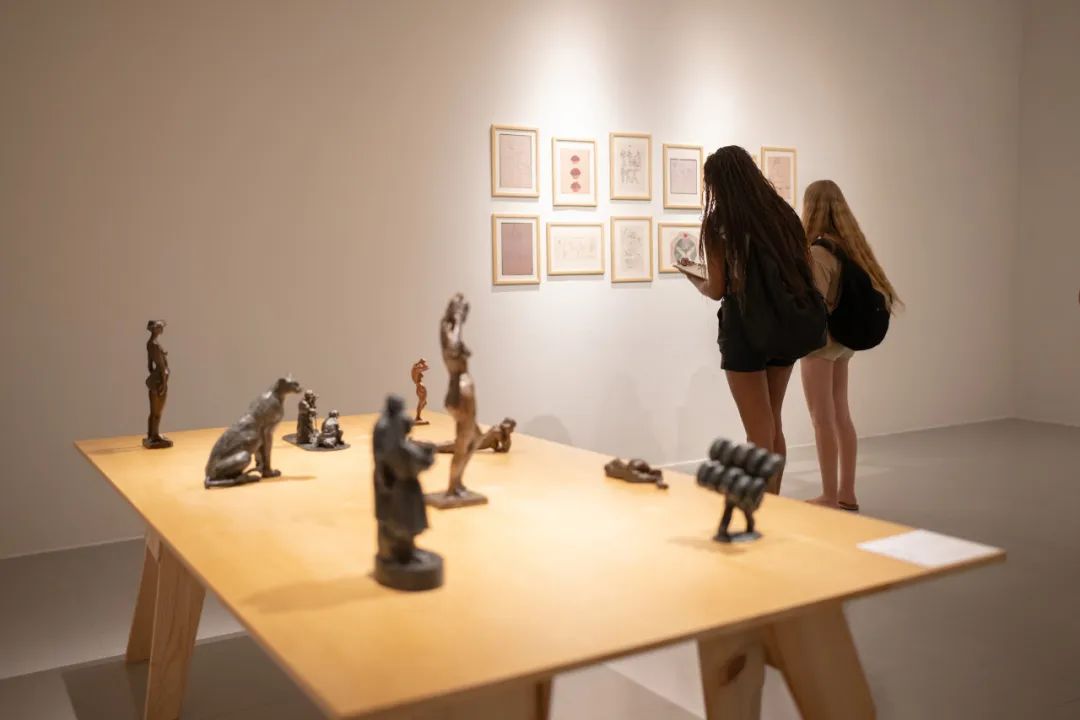
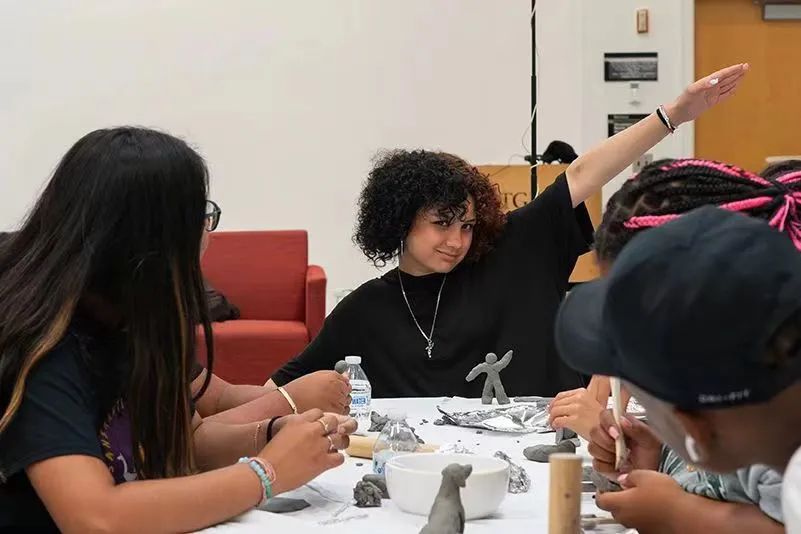
View of Exhibition and Summer Events of “LIU SHIMING: Life Gives Beauty Form”, Rutgers University, 2023
CAFA ART INFO: Other than interacting with a dynamic and diverse community, what additional suggestions do you have for future exhibitions and art activities of Liu Shiming?
Richard Vine: As I mentioned earlier, I really like Liu Shiming drawings—even though, or maybe because, they’re so casual. I think we should bring more drawings and sketches to the exhibitions and maybe develop dialogues between the sculptures and drawings. Another possibility lies in the relation between Liu Shiming’s art and Outsider Art. I can imagine showing Outsider artworks and Liu Shiming’s works together. The third thing is more panel discussions. I think inviting more experts from various fields would be extremely helpful. Someone could talk about the relations between Liu Shiming’s art and Russian art, someone could talk about Gothic sculptures in relation to Liu Shiming’s art, and so on, and so on. Sometimes, fields that seem like very distant and dissimilar actually prove to be very provocative and stimulating. The art world operates on word of mouth. It is very important what people say, and who is saying it. More discussion generates a better reputation for any artist, and that in turn spurs more conversations.
About Interviewee:
 Richard Vine is the former managing editor of Art in America. He holds a Ph.D. in literature from the University of Chicago and previously served as editor-in-chief of the Chicago Review and Dialogue: An Art Journal.
Richard Vine is the former managing editor of Art in America. He holds a Ph.D. in literature from the University of Chicago and previously served as editor-in-chief of the Chicago Review and Dialogue: An Art Journal.
Vine has taught at the School of the Art Institute of Chicago, the American Conservatory of Music, the University of Riyadh in Saudi Arabia, the New School for Social Research, and New York University. Some 300 of his articles, reviews, and interviews have appeared in various journals, including Art in America, Salmagundi, the Georgia Review, Tema Celeste, Modern Poetry Studies, and the New Criterion, and in numerous art catalogues and critical compendiums.
His critical books include Odd Nerdrum: Paintings, Sketches, and Drawings (2001) and New China, New Art (2008), which traces the emergence of avant-garde art in China from 1976 to 2008. In 2013, Vine curated the international exhibition “Darkness Visible” at the National Art Museum of China, Beijing. “Golden Sections,” his ten-year survey of the work of Icelandic sculptor and architect Gudjon Bjarnason, was mounted in 2015 at the National Academy of Art in New Delhi, India. In 2016-17, he co-curated the group exhibition “Murder, She Said” at the John Jay College of Criminal Justice, New York. Vine’s novel SoHo Sins, a murder mystery set in the New York art world of the 1990s, was released in 2016.
Interview conducted by Emily Weimeng Zhou.
Interview transcribed, excerpted, and structured by Harry Chirui Cheng and Emily Weimeng Zhou.
Text edited by Richard Vine and Sue Wang/CAFA ART INFO.
Image courtesy of Liu Shiming Art Foundation, Liu Shiming Sculpture Museum and Richard Vine.


